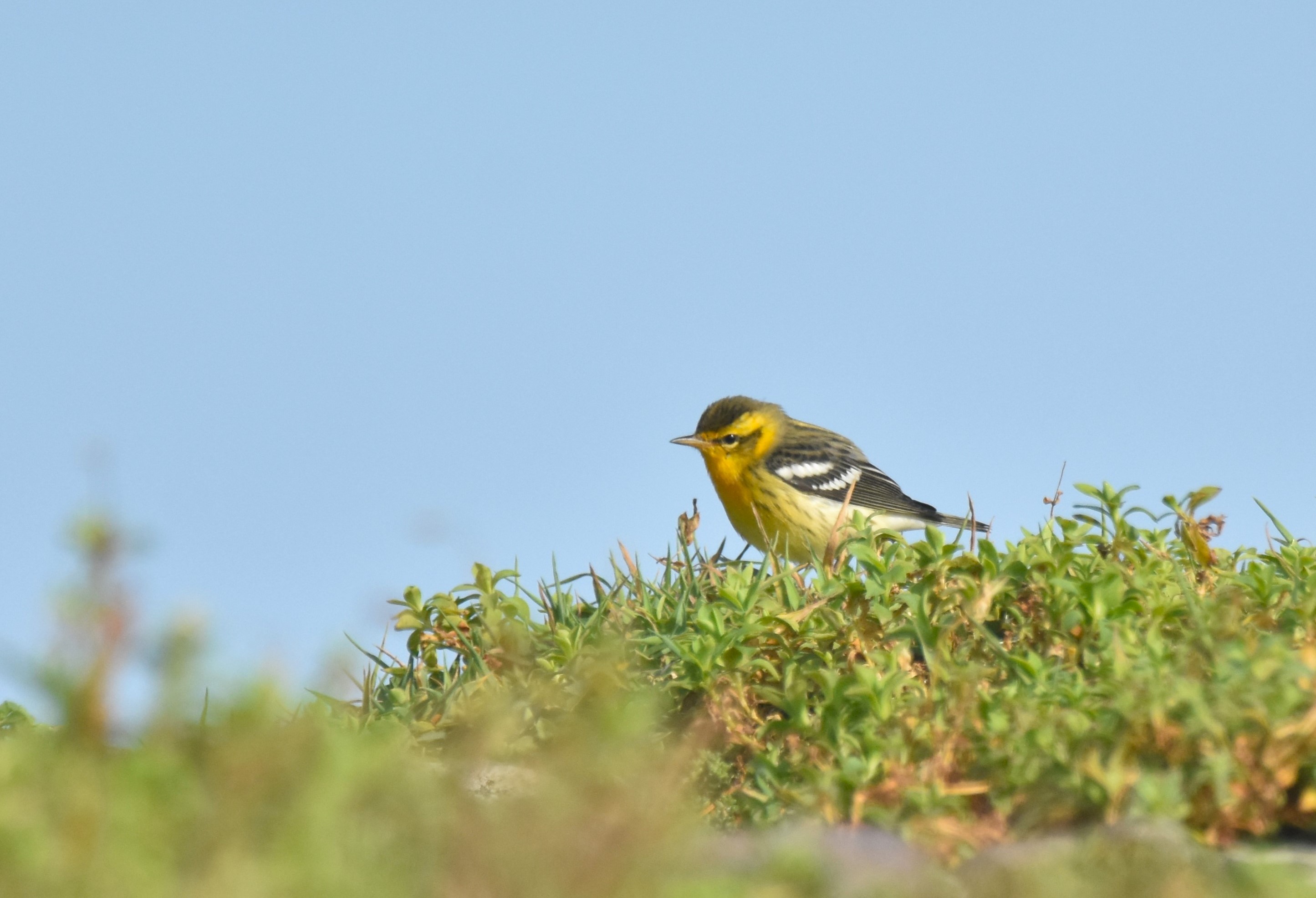This story starts with a forecast of strong westerlies and a prediction of falls of American passerines. In my prior two years working on Skellig Michael the prediction of westerlies has not been beneficial. The impacts of transatlantic storms often render the island inaccessible due to large swells and high winds.
This can have a negative impact on the goals on my work by potentially missing core stages of development of Manx Shearwater and European Storm Petrel chicks that I am monitoring, as well as keeping me off the island during the core migration season. Fortunately, a decision this year to return to the island on a Sunday paid dividends both from a scientific and birding perspective.
For those of you unfamiliar with the island, Skellig Michael is a World Heritage Site situated some 12 km off the south-west of Ireland. The island contains an ancient monastic site and three separate stone stairways to a monastery on the north peak. The island, along with the Little Skellig, forms the Skelligs Special Protection Area (SPA), designated for its large seabird colonies. This is the core reason for my presence on the island, monitoring productivity of seabird species for which the island is designated.
Come mid-September this means monitoring European Storm Petrel and Manx Shearwater nests, as well as general biodiversity recording.
Messages from several friends and birding colleagues had me well prepared for the potential of American passerines and it was great to be on the island when there was possibility of anything turning up. Migration truly is a fascinating thing. That said, it does not take precedence over the work I am on the island to do, and with that in mind I set off early on the morning of 20 September with the aim of completing a round of shearwater monitoring.
The predicted westerlies had materialised, as had the cancellation of boats for the foreseeable future. It is worth noting that approximately half of the nests in my monitoring routine had been vacated. This, combined with the lack of tourists, allowed me to take a more leisurely stroll to the monastery where the remaining nests were located.
The route to the monastery was remarkably quiet until I approached the monastery entrance, at which point I flushed a juvenile Rosy Starling – not a bird I was expecting on strong westerlies but a fitting location of a species of the genus Pastor, and a first for the season.
I completed a loop around the monastery and to the north peak, finding the area to be relatively quiet. At this point I collected my monitoring kit from the storage hut and packed away my camera. Usually at this point I leave the camera and binoculars behind, as it can be a bit awkward handling everything, though on this day I decided it best to keep both with me. An hour or so later and I had finished my Manx monitoring. The last nest being located near the summit of the north peak, I retreated to solid ground and took a breather. After contemplating the next course of action, I decided to leave my monitoring kit and return to the peak for a last look around.
Two steps later and I caught a flash of yellow on a bird with dark wings and white wing-bars as it dropped down from high and settled out of sight near the summit. This led to a scramble for the as-yet unpacked camera and a thought of "which one?". The combination of white on a dark wing and yellow body automatically left me with a couple of options, but Blackburnian Warbler was at the forefront of my mind. Camera unpacked and settings checked, the bird promptly reappeared on a decaying ragwort stem and proceeded to catch flies before again disappearing, this time behind some campion.
As I wondered if I had enough detail, the bird then casually strolled out into a clutter-free environment giving delightful views for another 20 seconds or so before flying up about 20 m and disappearing purposefully to the south.

The Blackburnian Warbler seemed to drop out of the sky after a session of Manx Shearwater monitoring (Brian Power).
With that I checked the images and surprisingly quickly settled on my identification of Blackburnian Warbler. I popped off a couple of back-of-the-camera shots to friends Niall and Tom. A near-instantaneous reply from Tom confirmed the ID but also contained the line "first Irish record", which I had been completely unaware of while observing the bird. This was followed shortly after by a similar reply from Niall.
Most of the migratory birds I encounter on Skellig often disappear into inaccessible gullies and give only brief views. To get such good views of this bird was magnificent, a bird that would stand out anywhere. With that in mind I put the news out: "Blackburnian Warbler briefly on Skellig Michael just now, flew off high and south."

Although the warbler – a first for Ireland – flew off to the south, it made a second appearance later in the day (Brian Power).
I felt a little guilty knowing that even if the bird hung around for a week it would be out of reach for anyone else, given the sea state and forecast. That evening I was spoilt with a follow-up encounter during which I really got to enjoy the full beauty of this magnificent bird that had survived a transatlantic crossing. It gave good views when it appeared for a second time along the South Steps and in the monastery before it disappeared down the East Steps and out of view.
Massive thanks to Niall Keogh and Tom Kelly, whose prompts had me memorising images of potential arrivals and had me alert to the possibility of what was about to happen, and for the rapid replies regarding the bird's identification.


